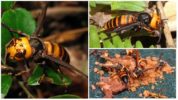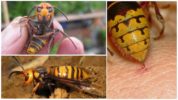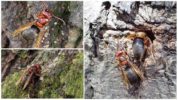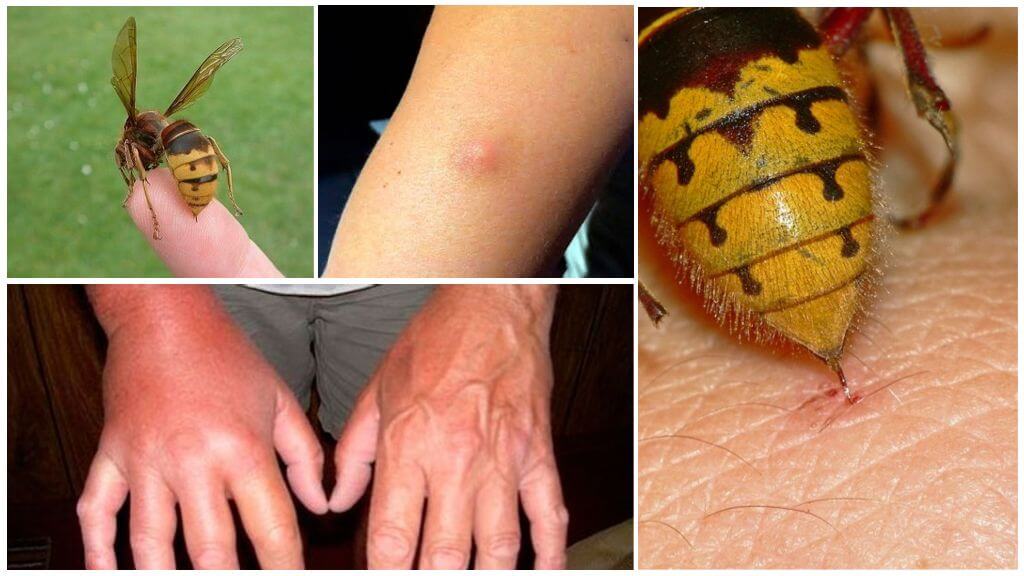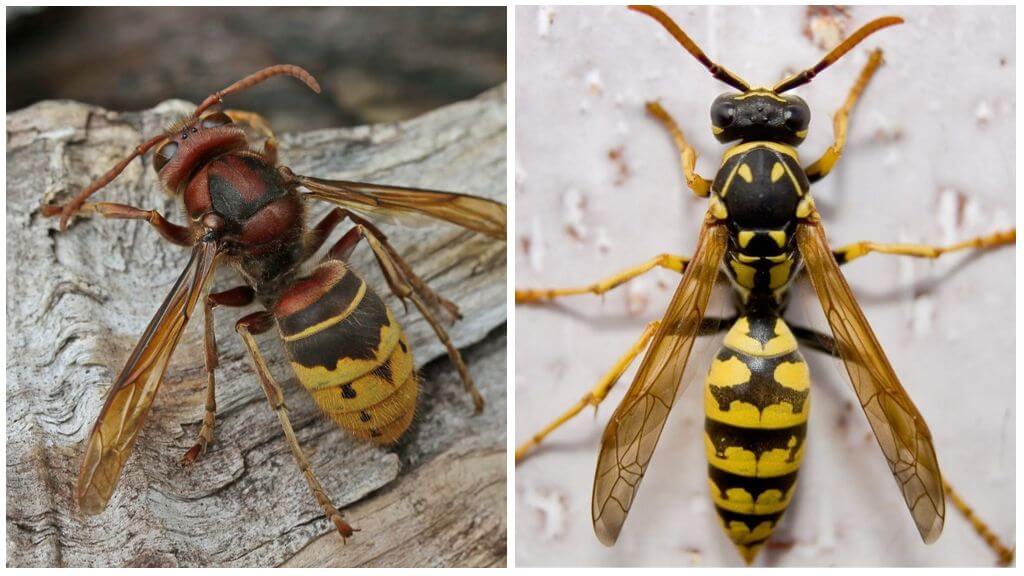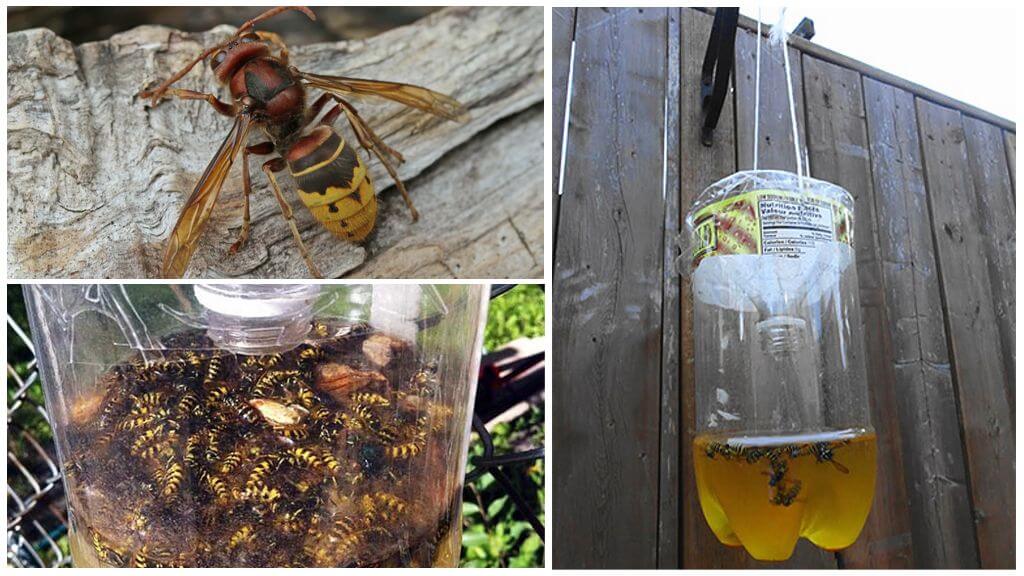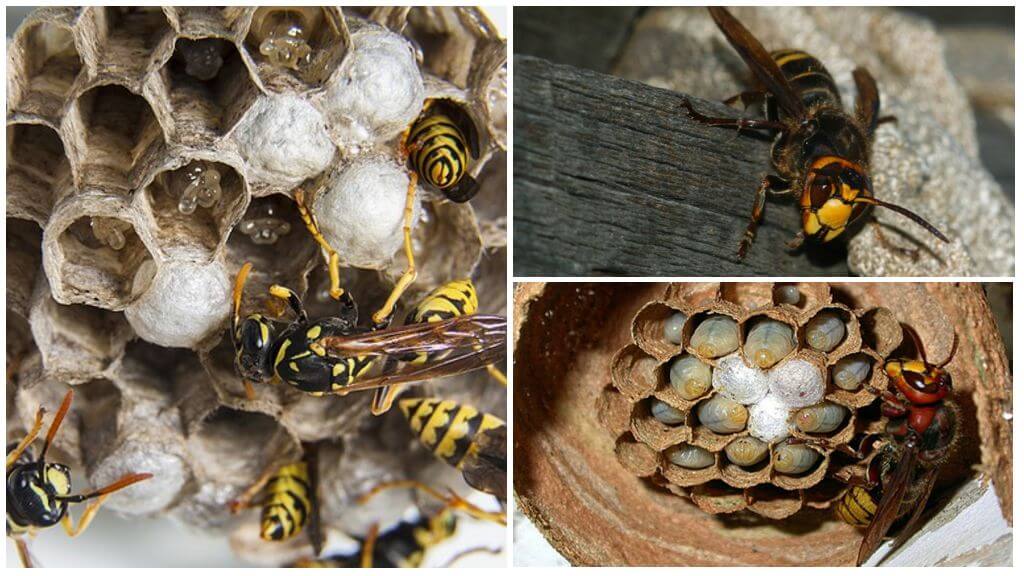- Giant asian hornet
- Asian hornet bite
- Giant asian hornet
- Black hornet
The largest insects in the world are hornet family and outwardly resemble them, surpassing only in size. The giant Asian hornet is the most dangerous in the world, because from it bites several dozen people die every year. Another species is the black hornet, although it is smaller in size, differs in the original way of reproduction.
Species of Gigantic Hornets
There are 23 species on our planet hornetswhose lifestyle has much in common, and the external signs differ in size, color, there are differences in nutrition and behavior. The most gigantic and dangerous insect for humans is the species of Asian hornets (Vespa Mandarinia), which lives in the forests of Southeast Asia and the Far East, in the subtropical regions of Central Asia, Southern Europe, North Africa and the Middle East.
Depending on the habitat, Asian Mandarin is divided into several subspecies: for example, in Japan japanese hornet, in China - Chinese, etc.
The varieties of giant hornets include the following:
- Oriental, considered the most beautiful among the brethren, is painted red-brown, with 3 yellow stripes on the abdomen. They live in the arid zones of Russia and the Middle East, preferring dry steppes and deserts.
- Black or Hornet Dybowski (Vespa dybowskii) - differs from other species in that it nests in the already built houses of its brothers, previously killing the queen and all the inhabitants.
- The African hornet is one of the subspecies of the Asian "giant wasp", it also has a yellow-black color, but lives in North African countries: Algeria, Libya, Egypt, Somalia, Sudan, etc.
Interesting!
In nature, in the southern regions of Europe, in the Crimea or the Caucasus, in the Middle East, you can find black hornets with blue wings, quite large in size - up to 28 mm. However, according to biological classification, they are called bumblebee carpenter and are representatives of the bee family.
Description of the Asian giant
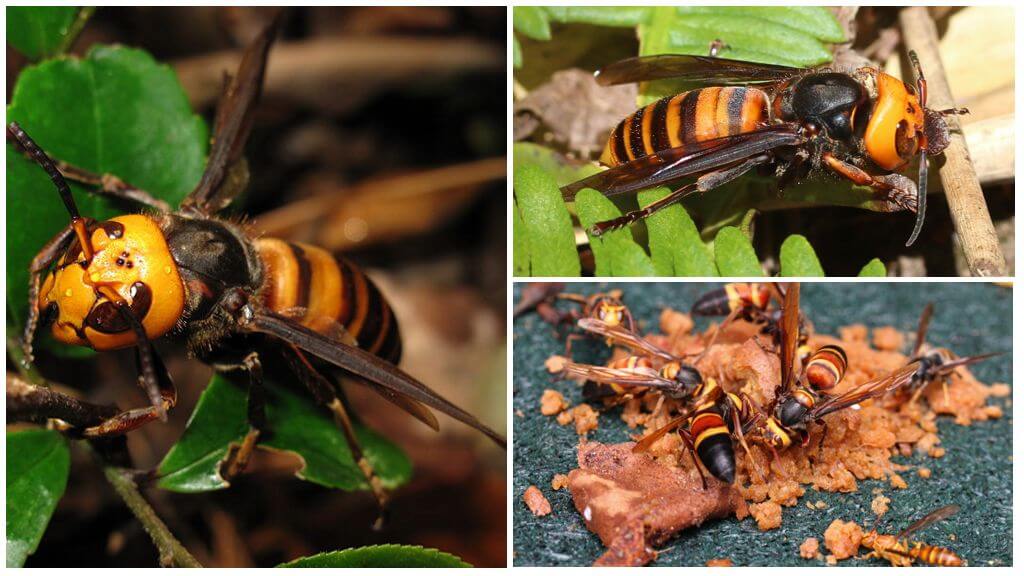
Most dangerous and the largest hornets on Earth are Asian giant ones, which can be found in the forests of not only Asia, but also in other countries, which should be taken into account by tourists planning to visit exotic corners of the planet.
Outwardly, the Asian hornet looks like a huge yellow-black wasp with a wingspan of up to 7.5 cm, so it is impossible not to notice it.
Interesting!
In different countries, locals call him “sparrow bee” or “tiger bee” not only for the size and presence of black and yellow stripes, but also for the mortal danger of bites, which cause severe toxic poisoning in people, and for allergy sufferers fatal outcome.
The body of a giant Asian Mandarin is 5 cm long, painted in yellow and black stripes, and the breast is almost completely brown or black. Unlike the European look, the head has a bright yellow color, it has a long mustache.The number of eyes he has is 5: in addition to 2 ordinary eyes, his forehead is decorated with 3 additional organs of vision, which allow better orientation in space and terrain, to distinguish colors (see photo of the largest hornet and his eyes).
By its way of feeding, it refers to predators that actively hunt small insects, including pests. However, giant hornets also destroy beneficial bees, causing severe harm to apiaries. Larger sizes allow them to get more food, which is not available for small relatives. They also like to feast on sweet fruits and berries, juices or nectar.
Asian hornet venom and the effects of a bite
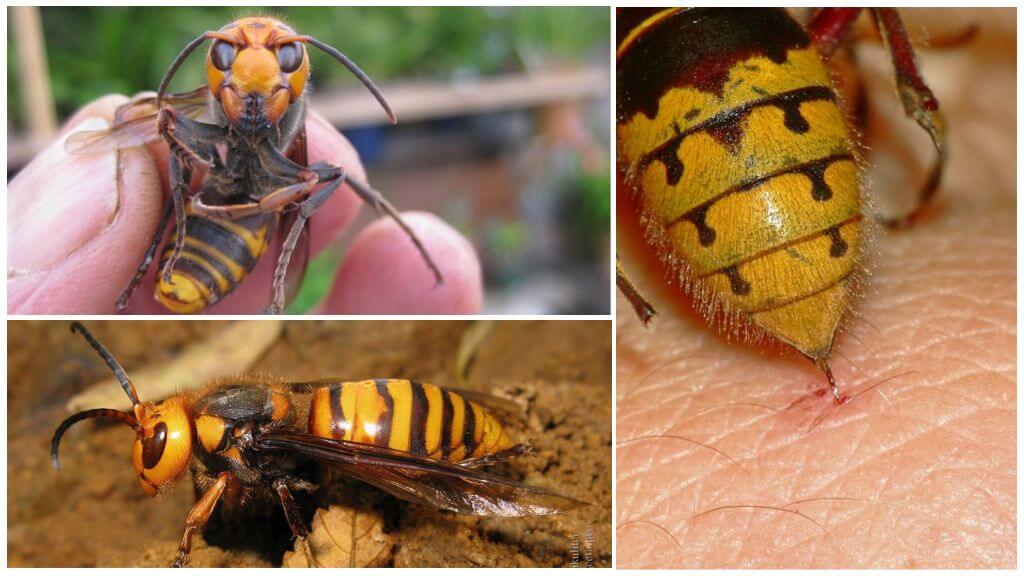
A characteristic feature of giant killer hornets is the ability to repeatedly bite and inject toxic poison into the victim’s body with a sting. The substance formed in the body of the insect has a complex composition and has a strong toxic ability.
The main components of the poison of giant Asian hornets:
- histamine, contributing to the appearance of edema and an allergic reaction;
- mandorotoxin - refers to a type of neurotoxins that affect the blocking of the mammalian nervous system;
- acetylcholine - a substance released during a bite, which attracts other hornets by smell, after which the victim is attacked by several relatives at once;
- toxic substances that have a melting function on the victim’s tissue, which causes severe pain and even a shock state.
The reaction of the human body to a hornet sting usually manifests itself almost instantly: there is severe inflammation, swelling and hardening at the injection site, and blood flow (hyperemia). Then the temperature begins to rise, there is an increase in lymph nodes, shortness of breath and headaches, an attack of a strong heartbeat. In a situation where a person prone to allergies was attacked, asphyxia (strangulation) may develop in almost a few minutes, which could lead to death.
Due to the fact that hornets often attack with the entire “army”, as a result of numerous bites, a completely healthy person may develop tissue necrosis, extensive hemorrhages in the internal organs.
Interesting!
Annually, about 70 people die from the bites of giant hornets in the Japanese Islands, which exceeds the mortality rates from bites of any large or small wild animals and indicates the extreme danger of the "Asian killers."
Life cycle
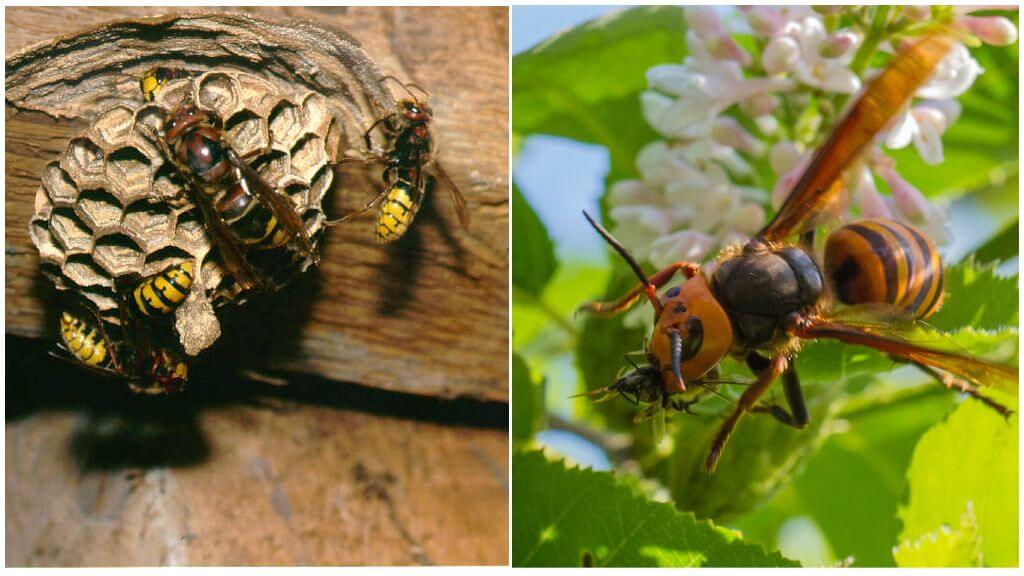
The habitat of most Asian hornets in Russia is the Far East, as well as the wooded areas of China, Japan, India and Korea. After hibernation, the queen-queen, fertilized in the fall, is looking for a place to build nests. The building material for him is the tree bark chewed by the jaws, from which the "builders" form a honeycomb and a house in the form of a cocoon, hang it on tree branches or hide it in a hollow or cave.
After construction, the female lays eggs in a honeycomb and fixes them with a sticky mass. As they mature, larvae appear, which are fed by working individuals of the colony, for which they bring small insects from hunting, which are previously partially chewed in the mouth.
In almost 2 weeks, full-fledged female hornets and drones grow from the larvae, which are engaged in the further construction of the nest. In total, the queen can lay in the colony up to 500 eggs.
Interesting!
At the end of the warm season, the female and working males die, only fertilized individuals - the future founders of the colonies - survive.
Giant Hornets Hunting Tactics
All months, from spring to cold snap in autumn, from early morning until late evening, Asian hornets hunt for food for larvae developing in the nest. Flying through the forest, scouts look for small insects, as well as bee hives. Having found them, they put a label with a special substance with odorous pheromones.Workers hornets fly in to attract aroma, which kill the entire population of the colony, take honey and larvae.
On a note!
According to the observations of scientists, in one hunting operation, aggressive “conquerors” can destroy a colony consisting of 30 thousand bees. However, the inhabitants of the hive do not always surrender without a fight, sometimes they manage to kill the scout before giving a signal and can save their offspring from death. To do this, they lure him into the hive, where with the help of vibration of the wings they raise the air temperature to + 50ºС, which causes overheating and death of the reconnaissance hornet.
For a lone insect caught on the road to the "hunter", there is no way to escape. In an attack, a predator manages to quickly inject paralyzing poison, and then gnaws at prey with powerful jaws. It will take him only a few seconds to decapitate a mantis, which is larger than the “Asian wasp”.
Black Hornet - Nesting Parasite
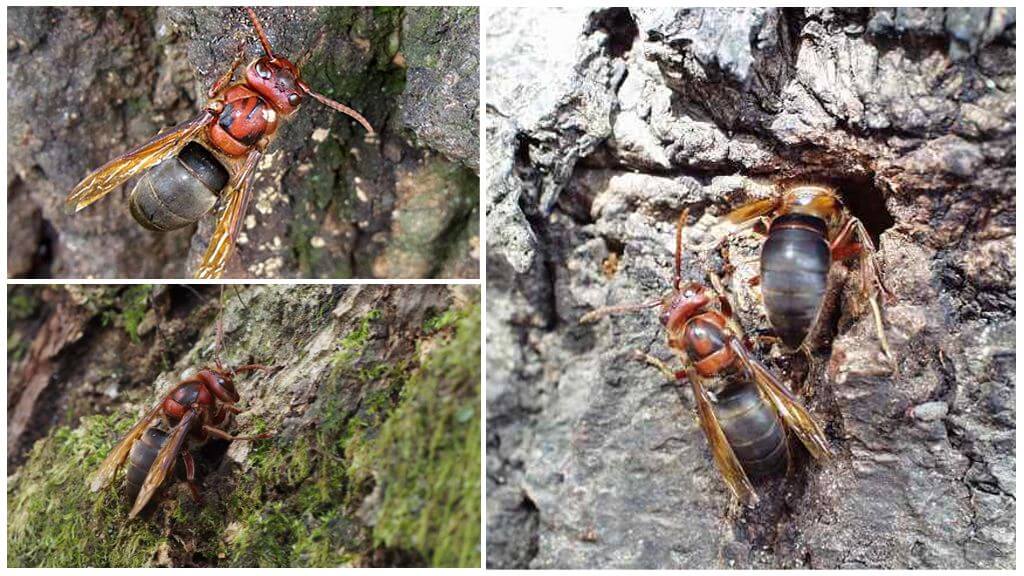
The habitat of this species: Primorye and Transbaikalia in Russia, as well as Asian countries: China, India, Burma, Japan and Korea, Thailand. The body size of females is up to 31 mm, males - 22-25 mm.
On a note!
The color of the insects is very different from the "giant wasps": the abdomen is black, the head is red and black, the wings are dark brown, as can be seen in the photo of the black hornet below.
This species of hornets leads an original way of life, which allows us to consider them nesting parasites. Instead of building their own hive, black females at the end of the summer season try to find a suitable, already built nest of their counterparts, usually of European appearance or small Japanese.
Penetrating inside, a black female kills the queen of the colony and takes her place, disguised with the help of special pheromones. She lays her own fertilized eggs, and the working individuals, not noticing the substitution, begin to feed her larvae and serve the new queen.
When the number of matured black females and males has increased sufficiently, they leave the colony and mate. Later, males die, and females hibernate in the bark of trees or look for the next nest to substantiate their home.
Avoiding Hornet Bites
Having met "giant wasps" in nature, you should be careful and not panic. Such insects never attack a person on their own, but only with the threat of destruction of their nests or causing damage.
Therefore, being in a forest near hives or flying "giant wasps", you must adhere to the following rules of behavior:
- you should never catch or disturb them;
- life threatening to approach the nest or try to touch it;
- one cannot make sudden movements or knock on trees, because “giant wasps” understand such an action as a threat;
- if one hornet is killed, then the whole family will fly to the smell emitted by it;
- smells of bananas or apples can provoke an attack, so it is not recommended to use cosmetics with such aromas when going to the forest.
It should be remembered that the giant hornets belong to the orderlies of the forest, destroying many types of pests, in nature there are few of them, which is why they are listed in the Red Book.
